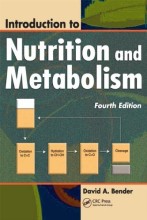NP5 ATP yield, TCA cycle
18 important questions on NP5 ATP yield, TCA cycle
Aspects of ATP: questions
Body (70kg): 3 mmol ATP/kg (MWatp = 507.18)
- How much ATP is stored (mol, gram)?
- How much glucose (15.6 kJ/gram, MWglu =180) is needed to cover a maintenance requirement of 8.5 MJ/day?
- The same for ATP (30 ATP/glucose; expressed in mol, gram)
- What problem shows up and how is it solved?
- How much ATP is stored (mol, gram)?
- 3*70=210 mmol = 0.210 mol * 507 = 106 gram
- How much glucose (15.5 kJ/gram, MWglu =180) is needed to cover a maintenance requirement of 8.5 MJ/day?
- 8.5 MJ = 8500 kJ --> 8500/15.6 = 545 g = 545/180 = ±3.0 mol
- The same for ATP (30 ATP/glucose; expressed in mol, gram)
- 3.0 mol *30 = 90 mol ATP = 90*507 = 45646g = 46 kg
- What problem shows up and how is it solved?
- only 106 gram is sorted but 46kg is needed, so conversion of energy is needed
Aspects of ATP: questions
Body (70kg): 3 mmol ATP/kg (MWatp = 507.18)
- How much ATP is stored (mol, gram)?
- How much glucose (15.6 kJ/gram, MWglu =180) is needed to cover a maintenance requirement of 8.5 MJ/day?
- The same for ATP (30 ATP/glucose; expressed in mol, gram)
- What problem shows up and how is it solved?
- How much ATP is stored (mol, gram)?
- 3*70=210 mmol = 0.210 mol * 507 = 106 gram
- How much glucose (15.5 kJ/gram, MWglu =180) is needed to cover a maintenance requirement of 8.5 MJ/day?
- 8.5 MJ = 8500 kJ --> 8500/15.6 = 545 g = 545/180 = ±3.0 mol
- The same for ATP (30 ATP/glucose; expressed in mol, gram)
- 3.0 mol *30 = 90 mol ATP = 90*507 = 45646g = 46 kg
- What problem shows up and how is it solved?
- only 106 gram is sorted but 46kg is needed, so conversion of energy is needed
Energy transfer by oxidation, 3 ways
- Reaction with oxygen: C6H12O6 + 6 O2 --> 6 CO2 + 6 H2O
- Withdrawal of electrons: Fe2+ --> Fe3+ + e-
- Dehydrogenation: Oxidation of alcohol to aldehyde; Hydrogen atom (H) --> protein (H+) + electron (e-)
- Higher grades + faster learning
- Never study anything twice
- 100% sure, 100% understanding
What are the nicotinamide nucleotide coenzymes?
can bind a H
What are the functions of H-carriers?
- Metabolic substrates are oxidized by dehydrogenation
- H-carriers (NAD+, FAD) are reduced by hydrogenation
- H-carriers (NADH, FADH2) are re-generated by oxidation in the mitochondria and are used for the regeneration of ATP
2.5 ATP / NADH
1.5 ATP / FADH2
What are the characteristics of the mitochondria?
- Sites for energy production of all cells, except mature RBCs
- Contain own DNA, can reproduce themselves
- Structure:
- outer membrane: smooth
- Inner membrane: cristae
- Cristae and matrix compartmentalize mitochondrion space
- have different roles in energy generation
Oxidative phosphorylation What? And Where?
Generates H+ gradient for generation of ATP
NADH and FADH2 are needed
5 complexen in the inner mitochondrial membrane
What dives phosphorylation?
By what is oxidative stress generated?
- Reactive Oxygen Species = ROS
- superoxide radical anion
- etc.
- etc.
Physiologically there are uncoupling proteins (UCP's) in:
- Brown adipose tissue (UCP1)
- Muscle and other tissues
What do you know about oxidative phosphorylation?
- Takes place in the mitochondrial cristae
- Regenerates NADH and FADH by oxidation and phosphorylation of ADP to ATP
- Cytoplasmic and mitochondrial NADH are not equivalent, as NADH cannot pass the mito innermembrane
Transport of reducing equivalents (NADH) from cytoplasm into the mitochondrion is done by ....
The mitochondrial electron transport chain may produce: (3)
- Oxygen free radicals
- mainly at the level of complex 1 By NADH
- ATP from ADP by oxidative phosphorylation
- NADH: 2.5 ATP/O ; FADH: 1.5 ATP/O
- Heat
- in presence of uncoupling proteins
Isolated mitochondria are incubated with 10 mol (cytoplasmic) NADH
- How many mol of ATP will be formed?
- What if you use a homogenate of mitochondria?
- How many mol of ATP will be formed?
- Cyto NADH ± FADH, thus 1.5* 10 = 15 mol ATP
- What if you use a homogenate of mitochondria?
- Homogenate = crushed mito's, so not intact
What is true in case of uncoupling of oxidative phosphorylation?
- No substrate is oxidised
- No oxygen is used
- No ATP is formed
- All of the above
What do you know about the citric acid cycle = TCA cycle?
- Takes place in the mitochondrial matrix
- Is the common pathway to oxidize carbohydrates, fat and protein
- Acetyl-CoA is, however, the ONLY substrate. Acetyl-CoA (activated acetic acid)
- Carbohydrates, fat and protein have first to be converted to Acetyl-CoA
How many carbons is acetyl CoA, Citrate and oxaloacetate?
Citrate = 6 carbons
Oxaloacetate = 4 carbons
- Acetate (2c) condenses with oxaloacetate (OAA, 4C) --> citrate (6C)
- 2x decarboxylation reactions --->>> reformation of oxaloacetate
- 4 oxidation reactions and one substrate-level phosphorylation
How do FFA and CHO enter the TCA cycle?
CHO as pyruvate
The question on the page originate from the summary of the following study material:
- A unique study and practice tool
- Never study anything twice again
- Get the grades you hope for
- 100% sure, 100% understanding
































